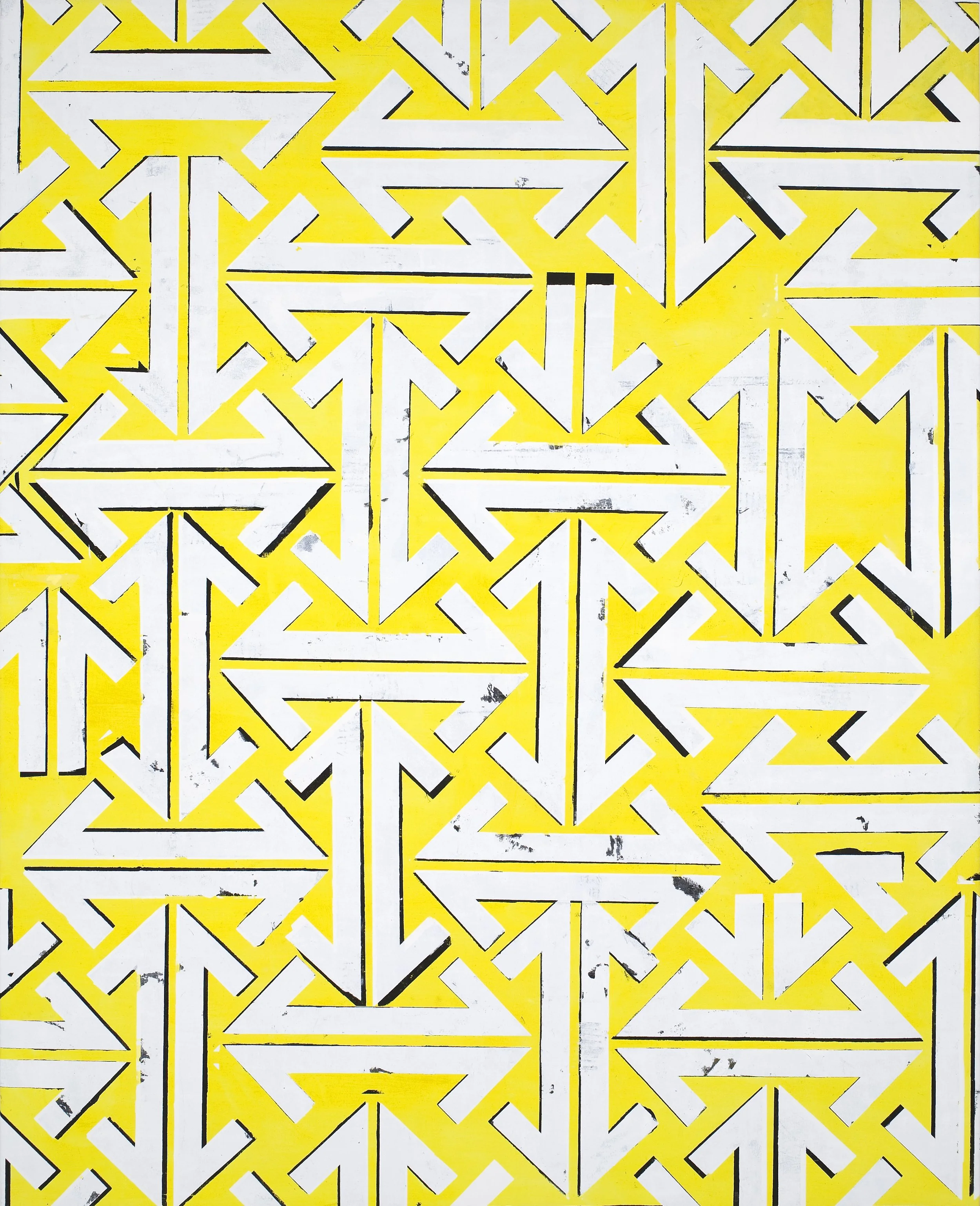The Cultural Property Collection
Decorative. With Attitude.
click on each painting for detail and installation images
Simple Exotics
In Simple Exotics, a “nice” phrase for invasive species, stylized sakura, Japanese cherry blossoms, are fragmented and splintered to reference larger issues of cultural exploitation of plants by nations, genetic piracy, and environmental degradation that threaten these and all other harbingers of future springs.
CONFECTIONS
“the Earth laughs in flowers…” Ralph Waldo Emerson, from poem Hamatreya. “Lanzetta undermines the sense of order and decorum normally associated with decorative and architectural patterns; her paintings transform the decorative into something far removed from paradise.” -John Yau, A Postmodern Garden
GameSpace
Reality and imagination are bridged as plants from the artist’s garden are transformed into large-scale silhouettes that challenge for supremacy against a palette of cultural patterns. Spiritual influences of Buddhism, textiles, and “details of Indian architecture, motifs from historic Mughal carpets and plant forms," are persistent sources of inspiration. -Gill Saunders, Curator, The Victoria and Albert Museum, London
Reign Marks
“Repeatedly stamped seals or “reign marks” historically symbolized power.. Here, fragmented motifs of Byzantine, and Islamic heritage are re-interpreted in incomplete visual sentences and palimpsests of geometric design. These rhythms conjure moments of transformation and cultural migration. The strain between natural and mechanical is emphasized with a spiritually significant, saturated palette and techniques of industrial silkscreen. Trance-inducing repetitions create tension, and compression inducing the viewer to complete the artwork as a reciprocal conversation between audience and artist”. -Colette Apelian, Art Historian, Rabat, Morocco
Cultural Instructions
“In her postmodern romanticism, Pleasure, Beauty and Desire are always in the forefront of Margaret’s concerns, as are the universality of decoration and pattern, issues of mechanical reproduction and our relationship with the natural world. Her postmodern romanticism forms hybrids of industry and nature.” –Carol Schwarzman, Independent Curator, Brisbane, Australia
Statement
MARGARET LANZETTA uses abstract, culturally significant pattern to explore larger issues of language, political power, spirituality, and migration. While New York-based, Lanzetta has lived/worked globally: India, Japan, Southeast Asia, North Africa, and Europe. Thus influenced, Buddhism, Islamic architecture, nature, world trade and industry are persistent inspirations. Geometric and botanical imprints link disparate cultures and geographic regions. Digital technology is combined with printmaking; silkscreening, stamping and glossy enamels create layered, tactile surfaces.
Lanzetta has exhibited at the Museum of Modern Art, New York and the Queens Museum Biennial. International exhibitions: the Kochi Biennale Collateral Projects, India; the National Museum, Bangkok, Thailand (pop-up exhibition); 2nd Bloom, Singapore; Famous Ornament, Tokyo; Rome, ATP Gallery, London; and the Stockholm Independent Art Fair. Awards include three Fulbright Fellowships to Asia and Europe; three residencies at the MacDowell Colony; the Ucross Foundation; the British Academy in Rome; Greenwich House Pottery; Dieu Donné Papermill; and a permanent commission for the New York subway. Lanzetta received an MFA from the School of Visual Arts in New York. Her works are held by the Museum of Modern Art, NY; the British Museum and the Victoria and Albert Museum, London; the Yale University Museum; and the Harvard Museums. Lanzetta press has appeared in The New York Times, The Brooklyn Rail, ArtCritical.com, Two Coats of Paint, and several Indian/Asian online and print venues. Lanzetta divides her studio time between New York and (pre-Covid) various international studios.










